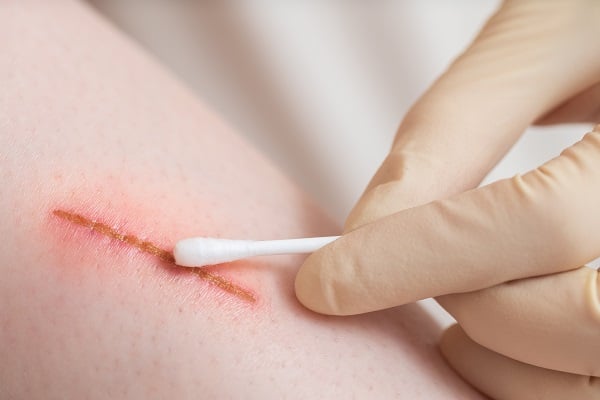Whether it’s from a kitchen mishap, a fall, or an unexpected scrape, cuts are a part of life. But not all wounds are created equal, and how you treat them can make a major difference in how fast and how well they heal. In this guide, we’ll show you how to heal a cut fast, when home care is enough, and when to turn to professional treatment options like Vayu Hyperbarics for help.
Step-by-Step: How to Heal a Cut Fast at Home
The first few minutes after a cut are critical. Here’s what to do right away:
1. Stop the Bleeding Fast
Apply gentle but firm pressure with a clean cloth or bandage. Elevate the wound above heart level if possible. Most small cuts will stop bleeding within 10 minutes.
2. Clean the Wound Thoroughly
Wash the area with warm water and mild soap. Avoid harsh antiseptics like hydrogen peroxide, which can damage healthy tissue.
3. Apply Ointment
Use the best ointment for cuts you can find—preferably one with antibiotic properties or those designed to promote skin healing.
4. Use Proper Wound Dressing
Cover the cut with sterile gauze or a breathable bandage. Change the dressing at least once a day or whenever it becomes wet or dirty.
If your wound isn’t healing or becomes painful, our wound care team can help.
Understanding the Wound Healing Process
Healing doesn’t happen all at once. There are four key phases:
- Hemostasis – Your body stops the bleeding.
- Inflammation – White blood cells clean the wound.
- Proliferation – New tissue begins to grow.
- Remodeling – The skin strengthens and scars may form.
To speed up wound healing, make sure you’re eating nutritious foods, drinking water, resting, and keeping the area clean.
For more advanced healing options, check out our hyperbaric oxygen therapy services.
How to Treat a Deep Cut
Some cuts are too deep for home care. If you notice:
- Exposed fat, muscle, or bone
- Gaping edges that don’t close
- Bleeding that won’t stop after 10 minutes of pressure
You may need surgical wound care or stitches. Don’t wait, get to an urgent care or contact a wound care professional.
When to See a Wound Care Specialist
If your wound shows any of these wound infection signs, it’s time to seek professional help:
- Redness spreading outward
- Increased pain or swelling
- Warmth or pus coming from the wound
- Fever or chills
You should also see a provider if:
- The wound isn’t showing improvement after 7–10 days
- You have underlying conditions like diabetes
- You notice signs of a non-healing wound
At Vayu, we specialize in wound care for diabetics, surgical wounds, and other complex cases. Don’t let a slow-healing cut lead to bigger problems.
What Professional Wound Care Looks Like
At an advanced wound care center like Vayu, you’ll get personalized treatment using evidence-based practices such as:
- Debridement (removal of dead tissue)
- Specialty dressings
- Infection control and antibiotic management
- Nutritional support
Explore our wound care services to learn how we can help your body heal faster.
The Power of Hyperbaric Oxygen Therapy (HBOT)
One of the most powerful tools we offer is hyperbaric oxygen therapy for wounds.
By delivering 100% oxygen in a pressurized chamber, HBOT:
- Increases oxygen supply to damaged tissue
- Reduces inflammation
- Promotes faster regeneration of blood vessels and skin
- Fights infection
It’s especially effective for:
- Chronic wounds
- Diabetic ulcers
- Post-surgical healing
Discover the full benefits of hyperbaric oxygen therapy at Vayu Hyperbarics.
Conclusion: Don’t Take Chances With Your Healing
Minor cuts usually heal with basic care, but if healing stalls or infection develops, fast action can prevent serious complications. Now you know how to heal a cut fast, and when to call in experts.
If you’re dealing with a non-healing or high-risk wound, don’t wait. Schedule a consultation with Vayu Hyperbarics today and take the first step toward complete recovery.
Frequently Asked Questions
Q: Should I use hydrogen peroxide on cuts?
A: No—it can slow healing. Stick to gentle soap and water.
Q: When should I stop covering a cut?
A: When the wound has scabbed over and no longer leaks fluid, usually after several days.
Q: What’s the best ointment to use?
A: Look for antibiotic ointments or those with ingredients like honey or zinc, which support healing.
Q: Is HBOT safe?
A: Yes. It’s FDA-approved for specific wound types and administered under medical supervision.

